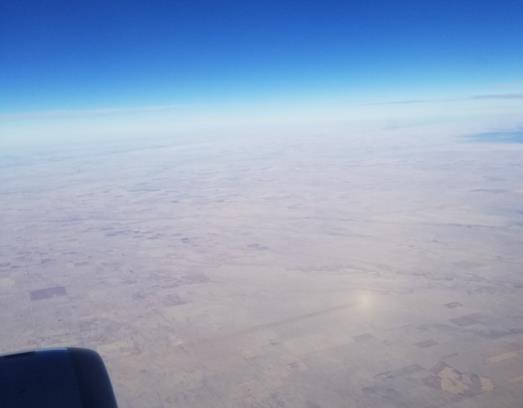
NavList:
A Community Devoted to the Preservation and Practice of Celestial Navigation and Other Methods of Traditional Wayfinding
From: Frank Reed
Date: 2022 Mar 2, 10:17 -0800
Jim W., you wrote:
"Perhaps it’s because the Sun and the tip of one’s shadow are antipodes on the celestial horizon of a highly localized celestial sphere centered on the top of one’s head."
Yes, that's a way of looking at it. There's been a trend in recent decades to replace the concept of a "celestial sphere" with the modern language of directions and vectors. For this case, consider the vector or direction to the Sun and also the "anti-Sun". The Sun has an altitude and azimuth. For example, in the late afternoon today somewhere in the eastern US at 20:15:00 UT, the corrected altitude of the Sun's center will be 25.87°, and its azimuth will be 233.45° (roughly SW b W). That's a specific direction in the sky. The "anti-Sun" is exactly opposite that direction, and we can express it in the same coordinates. The altitude of the anti-Sun is -25.87° (below the true horizon), and its azimuth is 180° away from the Sun at 53.45° (roughly NE b E, which makes sense). The anti-Sun is the location of your own shadow, specifically the shadow of the spot on your head where your eyes are located.
Why do we need the anti-Sun point? As in this case, sometimes it's easier to picture an angle from that point rather than a larger angle (180° - antiSun angle) direct from the Sun. A good example of this in basic weather observing is the location of a common rainbow. The arc of a rainbow is the set of directions 138° from the Sun. But that's hard to pictures. The angle from the anti-Sun is 42°. So if there's a late afternoon thunderstorm, and you're looking for a rainbow as the Sun starts to come out, you can plan ahead a bit and look 42° away from the shadow of your head on the ground.
Another trick with the anti-Sun... In December, I flew back from California, and over Kansas I noticed a bright spot on the ground tracking our motion. See the attached photo. The Sun behind us on the right, and I was in a left-side window seat. This bright spot was a bit of diffuse retro-reflection from the ground. Its angular position was identical to the anti-Sun. Whenever the spot passed over parked cars or certain other features, it would flare with bright little "sparks" of light since car reflectors are designed to produce a strong retro-reflection. Under the right conditions, one can also see the shadow of the aircraft itself and there may be a "glory" around it, but at cruising altitude and with no intermediate cloud layers, the shadow of the plane was no longer visible. However, notice in the photo that shadow of the plane's contrail is visible. It ends right at the bright spot of light. When ground conditions did not produce the bright spot, I could still see the end of the contrail shadow very close to the anti-Sun. In flight like this, you can keep track of the airplane's heading by watching the shadow of the contrail tip if you also have a tool that shows the Sun's azimuth near your location for the current time (neither need be exact). The azimuth of the end of the contrail shadow is 180° from the Sun's azimuth. Whenever the plane I was flying on made a turn, I could estimate rather closely the change in heading by watching the contrail shadow.
Your speculation about hats as shadow markers is delightful. Highly improbable! But very entertaining. I think we can blame the weird hats of military orders on weird military fashion-sense. As far as finding the right spot in the shadow for this case of estimating lunar distance angles, you should give it a try in ten days or so. What you should discover, as I did, is that you can see the shadow of your sextant rather well, alongside the shadow of your head if your direct view (horizon glass view) is towards the Moon. This is all quite crude though, and it doesn't make much difference where exactly you choose for the "perfect" spot in the shadow.
By the way, neither Cook nor any other practicing lunarian, either historically or today, would actually "need" a trick like this angle from the anti-Sun because the whole process absolutely requires tabulated lunars. In my case, I was just being lazy. The internet was in my pocket, and I could have gotten a predicted distance easily. Some 250 years ago aboard Endeavour, if Cook or the astronomers aboard wanted to preset a sextant for a lunar observation, they would just open the almanac and read out the angle for the nearest Greenwich time, estimated from the local time and the best estimate of longitude. There's one small exception that I can imagine... Some few explorers, on land especially, in areas "off the map" took lunars even after their tables had expired under the assumption that their results could be analyzed back home, possibly years after the trek is over.
Frank Reed







